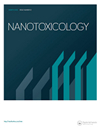The journal invites contributions addressing research into the interactions between nano-structured materials and living matter. This interaction has been dubbed the 'wet dry interface'. While the toxicological properties of substances presenting to organisms as molecules comes under aegis of classical toxicology, there appears to be size range of aggregations of molecules or atoms where there are toxicological mechanisms which are determined predominantly by surface chemistry. It is precisely that size range which defines the scope of this journal. Although much of the activity of the journal will involve investigations of the biological interactions with nano-scale materials, its scope should not be seen to end there but to extend to include all man-made nano-structured materials, for example including the interactions between living tissues and the surfaces of prostheses (e.g. wearing can produce nanoparticles) or in the context of 'eco-nanotoxicology' (i.e. the movement of nanomaterials through the biosphere, interactions with bacteria, invertebrates and vertebrates). The nature of the interactions within the scope of the journal includes the mobility, persistence and toxicity of nano-structured materials and their breakdown products in humans, experimental animals, the environment and within biota. Developments in technique for assessing and measuring such interactions through the use of in vitro and in vivo methods for risk assessments are a major area of interest for the journal. These include mechanisms of transport of nano-particles across membranes in living systems. Specific areas in the field of particle toxicity in which the journal wishes to encourage submission of papers include: the mechanism of toxicity associated with diminishing particle size. These include investigations leading to understanding of potential interactions with basic physiological mechanisms such as ion-transport, K-channels and Ca uptake. Also of relevance are the relevance of catalytic surface properties of particles to their toxicity, the importance of nano-particles as adjuvants and their relevance in immuno-toxicity and the significance of free radical generation at nano-structured surfaces. The journal is particularly interested in methods of toxicity minimisation, through coatings and other methods, in fields such as the medical and therapeutic use of nano-particles in the treatment of disease. The journal includes within its scope evidence of harm from nano-structured materials through epidemiological papers from occupational and population studies as well as controlled clinical studies.
